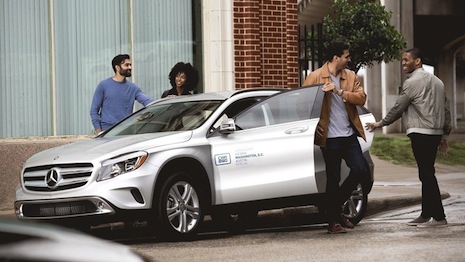- About
- Subscribe Now
- New York,
May 18, 2017

 Luxury auto manufacturers can take advantage of this trend by emphasizing their advertising campaigns
Luxury auto manufacturers can take advantage of this trend by emphasizing their advertising campaigns
Nearly a quarter of all consumers in the United Kingdom are influenced by a specific advertisement when they purchase a new vehicle, according to a new report from The Motor Ombudsman.
In the "New Car Code of Practice" survey, The Motor Ombudsman polled auto buyers on how they made purchasing decisions when looking for a new vehicle. The report delved into both demographic information and the ways in which automakers have lived up to their promises in advertising.
“In today’s digital era, consumers are never too far away from a brand encouraging them to buy a product," said Bill Fennell, chief ombudsman and managing director of The Motor Ombudsman, London.
"Although the lure of advertising can prove a powerful influencer when choosing a car, it is important for motorists to check, for added peace of mind, that the retailer is accredited to a recognized CTSI-approved Code of Practice, such as that offered by The Motor Ombudsman," he said.
Auto impulse
For most people, automobiles are not what many would consider an “impulse buy.” The price and level of commitment required means that most customers do extensive planning before they purchase a vehicle.
But a new report from The Motor Ombudsman found that a surprising number of customers go out and buy a car inspired by a specific advertisement. Twenty-four percent of consumers in the U.K. said they have bought a car based on an ad they saw.
The report also looked into which customers were more likely to make purchases in such a way. What it found was that young men, aged 17 to 25, are most likely to purchase a car after seeing an advertisement for that specific make or model.
Most consumers found their cars living up to expectations
In general, the likelihood of buying a car based on an ad is highest among the young and drops to the lowest right after, before steadily climbing back up as consumers get older.
On a positive note for auto advertisers, 93 percent of consumers report that the car they purchased lived up to the advertisement that they saw, suggesting low buyer’s remorse for customers that make impulse purchases.
This data is especially relevant to luxury auto manufacturers, whose target demographics are much more likely to be able to make impulse auto purchases than traditional consumers.
Luxury auto manufacturers can focus on their call-to-action advertisements in the U.K. to help drive up sales.
Call to action
Inspiring customers to make large purchases may become easier in the near future, as a report from Sotheby’s found that the majority of luxury consumers are confident in their solvency and ability to make such large purchases.
The majority of emerging affluent consumers believe that their nations’ economies are currently strong and headed on the right track. Beyond confidence in their national finances, consumers are showing an optimistic outlook for their own economic situation, creating opportunities for the luxury industry (see story).
This leaves them susceptible to actionable auto advertisements that inspire customers to make immediate purchases, such as a recent campaign from BMW that highlighted the ways its vehicles are meant only for a discerning audience.
BMW's 3 Series
The “Too Much” campaign points out the many ways that BMW Ms are “too much” for most people, and in turn only BMW owners can handle the cars. The short videos take a comedic tone on the ins and outs of owning a BMW (see story).
Luxury auto manufacturers can use advertisements like these to entice customers into making purchases on the fly.
"The study clearly shows the value of franchise dealers and vehicle manufacturers adhering to a code, as scores have once again remained consistently high across the board, which is undoubtedly a very positive trend for consumers and the industry,” The Motor Ombudsman's Mr. Fennel said.
Share your thoughts. Click here